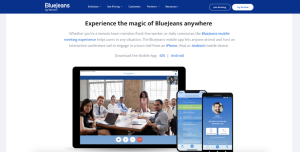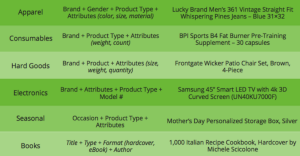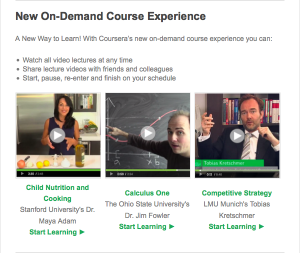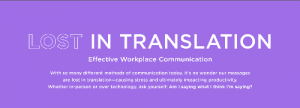Columnist Travis Wright says harnessing the power of user-generated content will increase engagement and consumer trust and ultimately drive sales.

Popular New Year’s resolutions include losing weight, spending less money and enjoying more time with family and friends. While these are worthy aspirations, there’s only one habit that content marketers should focus on cultivating this year: using user-generated content (UGC).
Simply put, smart brands are creating stories and moments to engage in versus products to push. UGC creates opportunities for brands to authentically connect with their customers. Consumers consider it to be more trustworthy than branded content, and it creates a better customer experience. Invasive advertising just doesn’t work anymore.
The creation of a brand subculture is driving sales more than traditional content and advertising.
Tap into the ego of your customers
People now share more than ever and look to their peers, family and friends for validation and recognition. By harnessing and showcasing these stories, brands are able to connect with customers in a more authentic and personalized way — lifting engagement, strengthening consumer trust and ultimately driving sales.
UGC is quickly becoming the keystone of any integrated content marketing strategy. If your brand isn’t using it, then you’re missing out on key opportunities to let your customers promote your products and services for you.
User-generated content helps your most passionate customers become your brand advocates, effectively building communities around your products and services.
UGC’s rising importance in integrated, multi-channel marketing
UGC includes any story or piece of content created by a person about a brand that they share with their networks. The most obvious example of UGC is social media content, but it can also include product reviews, videos, blogs and many other formats and media. What these UGC forms all have in common is that people use them as part of the buying experience to help them make purchasing decisions.
Currently, photos and videos are the most popular forms of UGC. Fifty-four percent of adult internet users regularly create and share photos and videos, according to Pew. Photos are also the most common form of UGC created by Millennials, according to Statista. Product reviews are another popular form: They make up 29 percent of the UGC which is created and shared.
This is important, as Millennials and Gen-Z use “visual” as their way of communicating — hence the popularity of Snapchat, Musical.ly and Instagram.
The fact is, user-generated content about brands is being created and shared by their customers, whether those brands or consumers recognize it or not.
The UGC marketing technology space is heating up
Most likely, your brand already has a significant amount of UGC out there just waiting to be harnessed. Because of this, companies such as Stackla, Olapic and Livefyre created platforms that enable brands to monitor social conversations to collect and curate UGC. In 2016, both Olapic and LiveFyre were acquired by larger companies — Monotype and Adobe, respectively.
Those UGC companies remaining in the space are receiving considerable rounds of funding. For example, Stackla, a UGC platform based in San Francisco with offices throughout the US, Australia and the UK, recently pulled in $4 million, bringing its 2016 total to more than $10 million. It works with brands such as Expedia, Universal Music Group and Disney.
“The exponential growth of social sharing has presented marketers with an unprecedented opportunity: access to a giant footprint of compelling, visual customer stories which brands can use to make their marketing more genuine, personal and relatable,” Peter Cassidy, co-founder of Stackla, told me in an email. “Marketers can now usher in a new era of customer-centric marketing where consumers drive the brand’s message.”
Why your brand should implement UGC
UGC is ideal for any content marketing strategy. You can take any piece of UGC and use it across virtually any channel, at any time. The users of your brand create the content anyway, and if you’re not curating it and showcasing your customers, you’re missing out on brand equity.
The utility of UGC then transcends individual marketing campaigns and can send a consistent message at every touch point where your customer interacts with your brand. The result is a greater likelihood of increased social engagement, higher conversion rates and better ad performance.
Major brands already have UGC in play. For example, automakers Toyota, Subaru and Ford utilize creative communication campaigns to encourage their customers to create and share content about their vehicles.
Hotel booking sites such as Orbitz, Expedia and Booking.com routinely integrate customer reviews across their communications channels, and Virgin Holidays achieved a 260 percent increase in online bookings, as well as a 64 percent increase in passengers year over year as a result of implementing UGC.
Consumer brands like Jawbone and Sony have also begun utilizing UGC, with Sony using it to support a product launch by having consumers create and share videos demonstrating their phones’ high-speed image capture feature.
Using UGC to create brand advocacy
If you’re in doubt about the effectiveness of fostering brand advocacy, just think about a company called GoPro. It transformed advertising by harnessing UGC to create a lifestyle around its brand.
This isn’t an accident. GoPro’s marketing strategy relies heavily on turning customers into advocates who share their positive brand experiences with family and friends. UGC enables you to enjoy the benefits of brand advocacy by making it easy for your customers to share what they love about your brand with the world.
Furthermore, you can increase the effectiveness of your UGC even more by using paid content amplification through online channels. This strategy combines the organic reach of user-generated content with the targeted reach of advertising. The reach of your UGC can be increased exponentially throughout each campaign.

There are stories about your brand that are being shared every day. Harnessing UGC enables you to engage and share the narratives through the voices of your most passionate brand advocates. As a result, you’re able to show consumers why they can trust your brand while personalizing your marketing directly to their interests. This level of authenticity drives higher engagement and ultimately leads to more sales.
2017 is shaping up to be the year that brands allow their customers to be the voice of their brand.
Some opinions expressed in this article may be those of a guest author and not necessarily Marketing Land. Staff authors are listed here.
Marketing Land – Internet Marketing News, Strategies & Tips
(119)









